
Designing An Autonomous Security Robot For Public Spaces
Security company SECOM has announced the creation of a new security robot, named cocobo, created in collaboration with Loftwork and znug design’s founder Kota Nezu. The robot, announced in June, uses cutting-edge technologies such as AI and 5G to provide security services in harmony with commercial facilities, office buildings and other locations.
Loftwork, as a partner of SECOM’s strategic collaborative project brand SECOM DESIGN FACTORY, worked with designer Kota Nezu, to plan and develop the project, research and execute on the robot’s design and facilitate meetings and workshops.

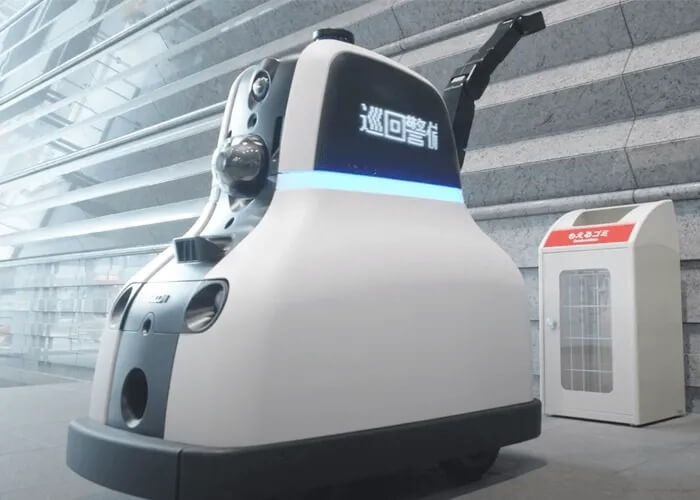
Background
SECOM has been designing robots since the 1990s, when robots were rare and did not run autonomously in public spaces. At the time, the people in public spaces needed to be able to tell that it was a security robot just from its appearance. However, it is now not uncommon to see robots in the modern world, meaning there is no longer a need for a “natural” form of security, which is why it has become necessary for security robots to take on a new form to meet the changing needs of the times.
One of the main challenges that the security industry faces as a whole is a shortage of manpower. Even if robots could replace security officers in so-called manned environments, such as large commercial facilities and airports, humans would still have to take charge of situations that require a flexible response. That’s why the goal was to create an autonomous robot that could cope with such environments and to change the meaning that robots can possess.
Research
During the research process, the team conducted interviews with architectural designers who create public spaces. By taking into account a wider range of opinions, the team was able to rethink the presence of robots in public spaces. In this sense, it was “design-driven innovation” in security robotics, as the team rethought and redefined the meaning in robots from the perspective of the kinds of experience instilled in the users’ minds.
This process has changed the meaning of the design of the robot from the existing “everyone can see its function” to a new meaning of “harmony with public space” and “dignity and friendliness”. This was the key to this project, and it was made possible only by open innovation.
Design concept
Innovating the Meaning of Security Robots Through Open Collaboration
During the development process, the team of SECOM, Loftwork and znug design focused on the meaning of security robots in today’s world. A series of discussions took place to redefine the question and to come up with design ideas to solve it.
The result is cocobo, a security robot with updated functions and a design that reflects the new concepts of “harmony with public space” and “dignity and friendliness” in order to fit in with a day and age when it is commonplace for robots to be present in public spaces.
The name cocobo means “a robot that is always here.” The name is a combination of “cognitive cooperation robot” and was chosen by SECOM after an internal and external selection process, with the aim of making the name more familiar to customers and employees.
Intro Video
More information about cocobo
SECOM announces the development of cocobo, a new security robot that blends in with public spaces
Design Process
An open, collaborative team structure
cocobo was a project based on SECOM’s open innovation principle. The team has two main expectations for this open innovation project. The first is that it’s not a commission i.e. not about achieving results, but about discussing and working together as partners The second is that discussions are happening with people who have very different mindsets. When deciding on a designer, for example, the team readily agreed that Mr. Nezu was the only person who could do it, as he has knowledge of both sensors and mobile devices, making him the perfect partner.
With an open innovation project like this one, the team was also not bound by SECOM’s own design philosophy. This way, there were very different discussions happening between many people, which were then combined with SECOM’s design philosophy to create something new.
Setting the 'Question’ And Mapping Impressions
In order to redefine the meaning of something, setting the question is an important first phase. In this case, the focus was not only what security guards do – their roles and functions – but also how to reflect their “impressions” onto the robot. It was also important to understand the kind of places and environments the robots will be used. In this case, the question proposed was: “What is required of security robots in public spaces such as airports?”
The key words that emerged among the project members during this process were “dignified” and “intimidating”. At first glance, these words seem similar, but “dignified” and “intimidating” create different impressions. But how does one go about reflecting a balance in dignity and intimidation in the robot? This was the big question.

The team mapped out their impressions of the balance between the two concepts in various professions, such as security guards, military personnel, hotel staff and so on. As a result, they came up with the concept of a “non-intimidating but dignified” security robot.
Developing ideas in a live atmosphere
For this project, the team went from the double diamond of divergence and convergence, which is often used in design thinking, to a triple diamond.

As a first step in the research, the team visited airports and commercial facilities to observe the actions of security guards. This was then reduced to a mapping of dignity and intimidation. Next, as an idea sketch, each project member drew an illustration on various sticky notes. This part of the project was the symbolic divergent.

This part was also difficult, as many understood the concept but questioned how it would come together as a design. In addition, members of the team also had to keep in mind the functional requirements that SECOM had already developed over the years.
Many of the designs that were voted for were actually “second generation” designs, in other words, designs that have been derived from someone else’s work. The process of sketching and discussing was repeated many times.
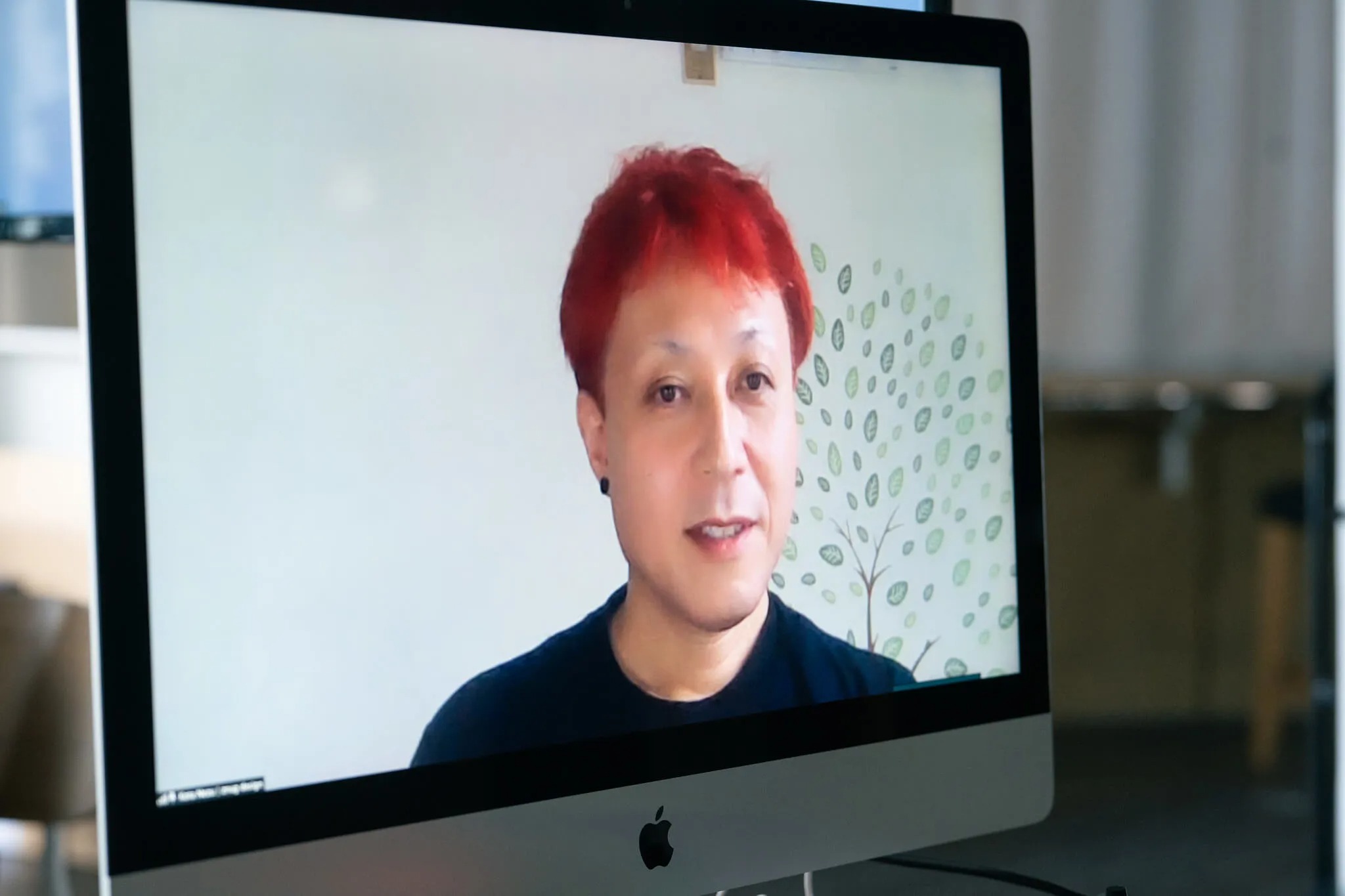
By repeating the divergence and convergence in the form of exchanging opinions and ideas, the teams generated a “live” feeling like the design was progressing on the spot. At the end, the designs were narrowed down to three proposals and then presented to the board members.
After not only listening to their evaluations, but also deepening the discussion with the board members, the design sketch for cocobo was finalized.

Features of cocobo
What kind of "presence" is required in an age where robots have become so familiar?
The world has changed from a time when robots were rare to a time when robots are more commonplace. This inevitably leads to a change in the “presence” of robots. This was one of the most important thoughts the team tried to incorporate into the design.
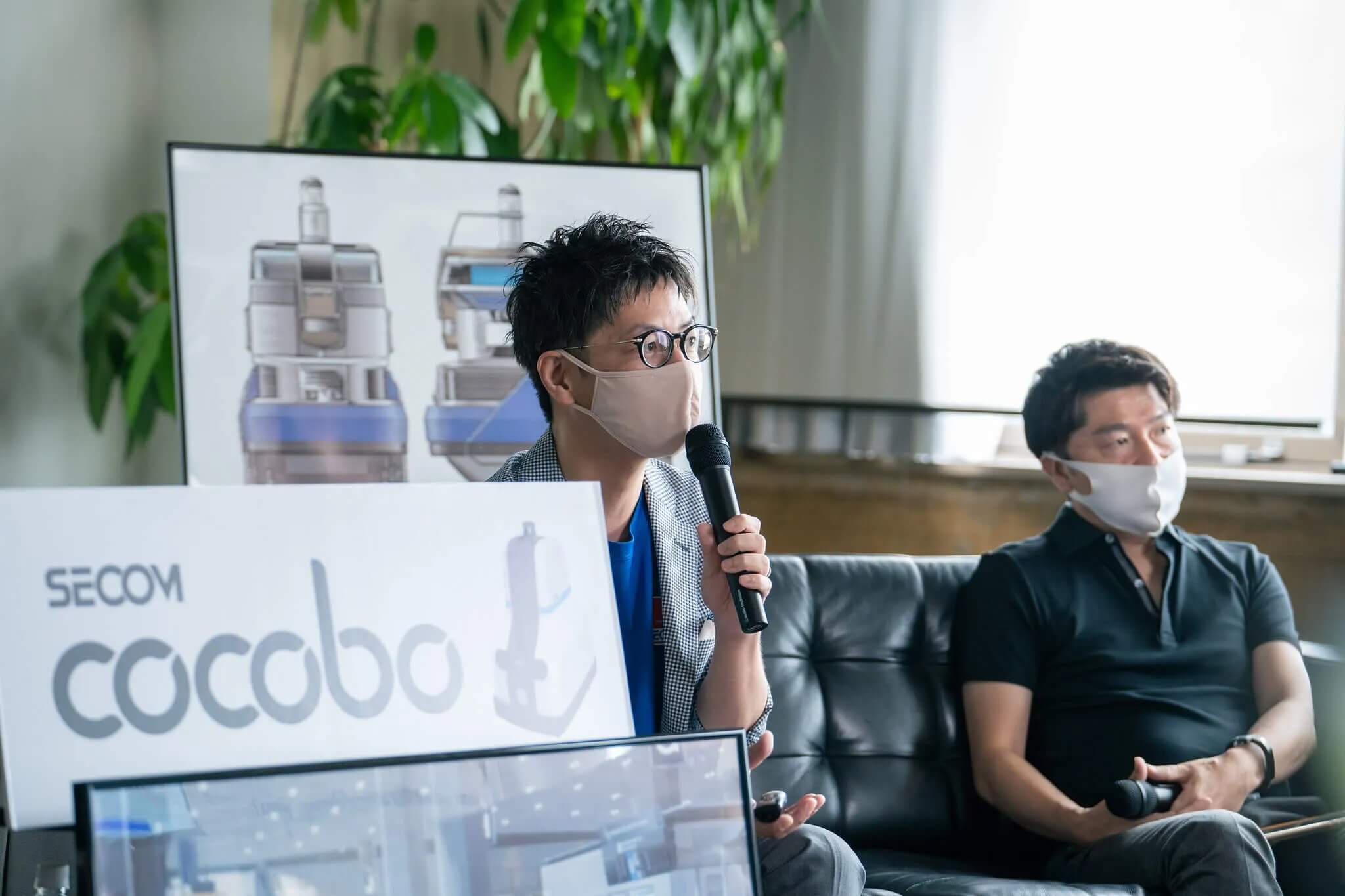
When asked to give a key word to capture the meaning of robots in public spaces in the future, members of the team said “CO”, meaning they wanted to create a “warm image of robots”.
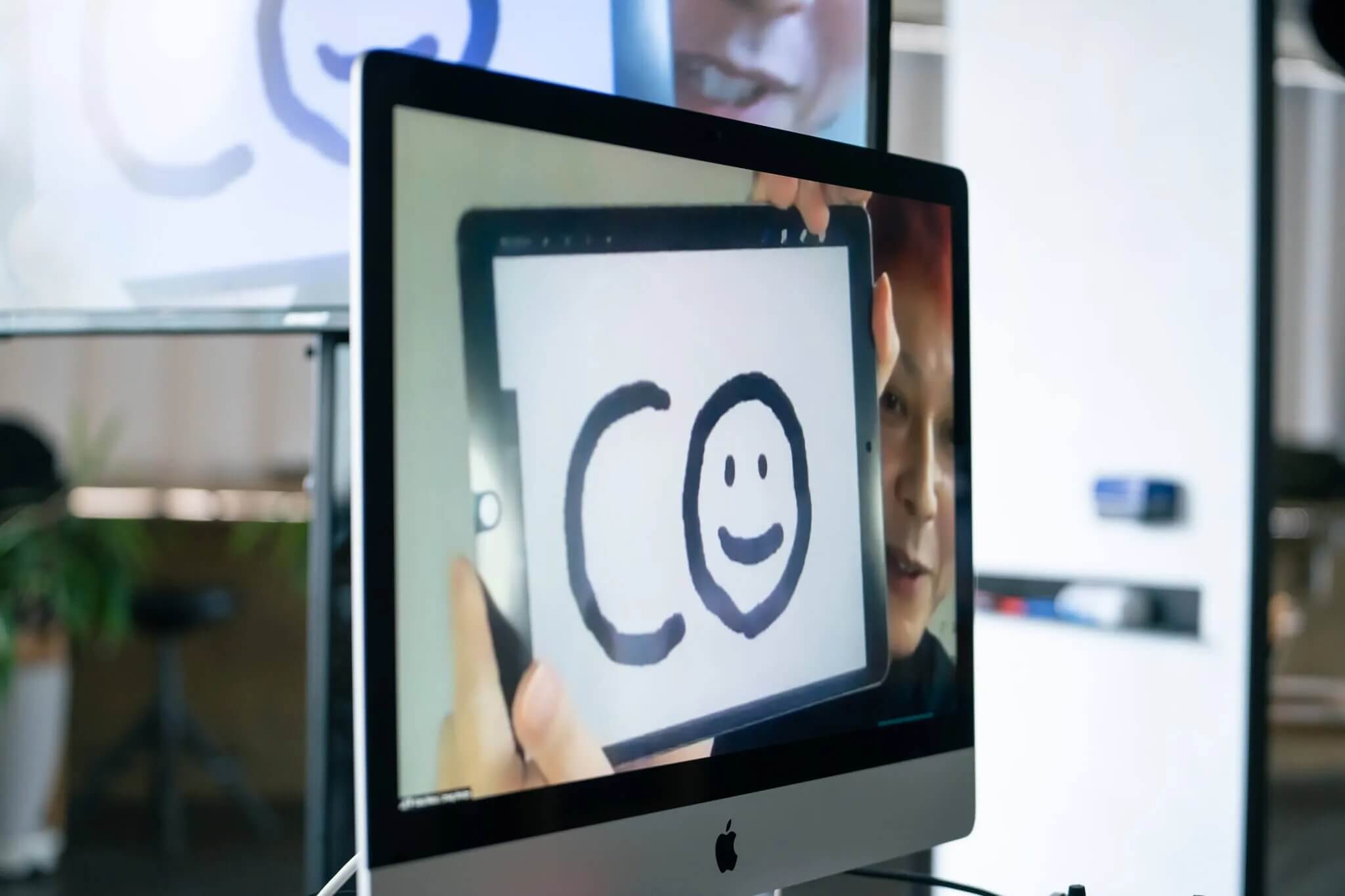

The dignified elements of cocobo are expressed in a design that is “stable” – with a low center of gravity – and its “rational core” – with functions laid out in the centre. Furthermore, its “curved and soft form” creates an impression that is non-intimidating. The parts on both sides can be changed so the product can be customized according to the space that it is being used in.
Redefining the Meaning of Robots
cocobo uses AI, 5G and other technologies to perform patrol and inspection duties, replacing resident security guards. The robot runs autonomously along its patrol route, automatically detecting abandoned objects along the way and notifying the disaster prevention centre. If it detects a suspicious person, it can produce a warning with voice and light, and even threaten the person with smoke. When carrying out inspection tasks, the system can be fitted with arms for different purposes, such as inspecting waste bins or checking door locks. The system is equipped with a sense of sight, hearing, smell and touch and the judgment of resident security guards who are responsible for the safety of commercial facilities and office buildings.
In addition, by using a variety of information on the cloud – including building surveillance camera images, information on equipment such as lifts and electric locks, and information on facilities and the local area – the system works with resident security guards to improve the efficiency and quality of a wide range of operations, from ensuring safety in normal to emergency situations by providing useful information.
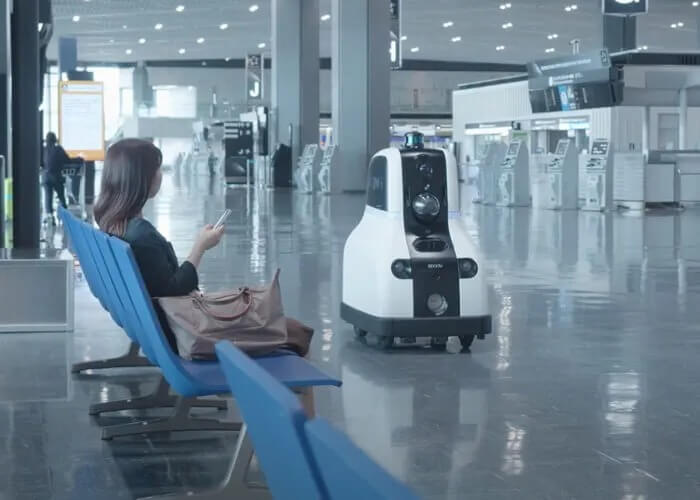

Design team
Kota Nezu
A creative communicator and designer born in Tokyo in 1969. He graduated from the Department of Industrial Design, Faculty of Engineering, Chiba University. After graduating from Chiba University, he joined Toyota Motor Corporation, where he worked as a concept development leader for the i-unit at Expo 2005 Aichi Japan. In 2005, he established znug design and has been involved in the concept planning and design of many industrial products, as well as contributed to the revitalization of the creative activities of manufacturing companies.
znug design https://www.znug.com/
SECOM DESIGN FACTORY

The SECOM DESIGN FACTORY brand represents a strategic collaborative project between SECOM and its partners to create innovative and original services. SECOM DESIGN FACTORY represents the activities and products that result from the creation of new customer and social values in a wide variety of fields. In February 2021, the company received the Minister of Economy, Trade and Industry Award at the 3rd Japan Open Innovation Awards, organized by the Cabinet Office.
SECOM DESIGN FACTORY https://www.secom.co.jp/innovation/designfactory/
Loftwork Inc.
A creative company that designs web, content, communication and spaces through open collaboration. The company operates FabCafe, a global digital manufacturing café, and MTRL, a global platform that supports co-creation between material manufacturers and creators to generate innovation.
Project Summary
- Client: Secom Co.
- Project period: January – March 2020
- Structure
- Project Manager: Ki Kuwabara
- Director: Taku Takahashi
- Producer: Yuhi Yanagawa
- Designer: Kota Nezu (znug design Ltd.)
Titles are at the time of the project
Report on the 21st session of the SECOM Open Innovation Lab
A report on this conversation is also available on the official SECOM Open Innovation website. The site also includes a detailed explanation of SECOM’s open innovation activities and specific examples of such activities. Visit here:
https://www.secom.co.jp/innovation/lab/event_21.html










